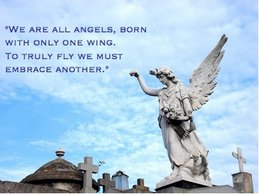Janus

Quoting F. Scott Fitzgerald: "The test of first-rate intelligence is the ability to hold two opposed ideas in the mind at the same time and still retain the ability to function." Sigmund Freud not only coped with ambivalence; he raised it to a new level of consciousness. Reaction formation, denial, repression, and dream work are some of the terms he used to accommodate the phenomenon of opposites that he observed in himself and others: Disgust conceals attraction, altruism conceals sadism, behind the fear lies the wish, etc. Many people cannot tolerate such oxymorons in their lives; they feel out of control, or "crazy." Their notion of sanity stifles creativity. Freud's elucidation of the dynamic unconscious enabled people to cope better with normal inconsistency and to be more creative as a result.
A psychiatrist, Albert Rothenberg, M.D., has described a creative cognitive sequence that he has termed the janusian process, after Janus, the Roman god of doorways and beginnings, whose faces look in opposite directions at the same time.
"In Roman mythology, Janus was the god of gates, doors, doorways, beginnings, and endings. His most apparent remnant in modern culture is his namesake, the month of January. Though he was usually depicted with two faces looking in opposite directions (Janus Geminus (twin Janus) or Bifrons), in some places he was Janus Quadrifrons (the four-faced). The Romans associated Janus with the Etruscan deity Ani. His ability to see both forwards and backwards at the same time aided him in his pursuit of the nymph Carna whom he gave power over door hinges as a reward for her favours.
Janus was frequently used to symbolize change and transitions such as the progression of past to future, of one condition to another, of one vision to another, the growing up of young people, and of one universe to another. Hence, Janus was worshipped at the beginnings of the harvest and planting times, as well as marriages, births and other beginnings. He was representative of the middle ground between barbarity and civilization, rural country and urban cities, and youth and adulthood. (Source)
In the janusian process, multiple opposites or antitheses are conceived simultaneously, either as existing side by side or as equally operative, valid, or true. In an apparent defiance of logic or of physical possibility, the creative person consciously formulates the simultaneous operation of antithetical elements or factors and develops those formulations into integrated entities and creations. It is a leap that transcends ordinary logic. What emerges is no mere combination or blending of elements: the conception contains not only different entities, but also opposing and antagonistic elements that are experienced and understood as coexistent. As a self-contradictory structure, the janusian formulation is surprising when seriously posited. Although it usually appears modified and transformed in the final product, it leaves the mark of implicit unexpectedness and paradox on the work.
 ABF, for the promotion of human rights and democracy in Iran
ABF, for the promotion of human rights and democracy in Iran



No comments:
Post a Comment